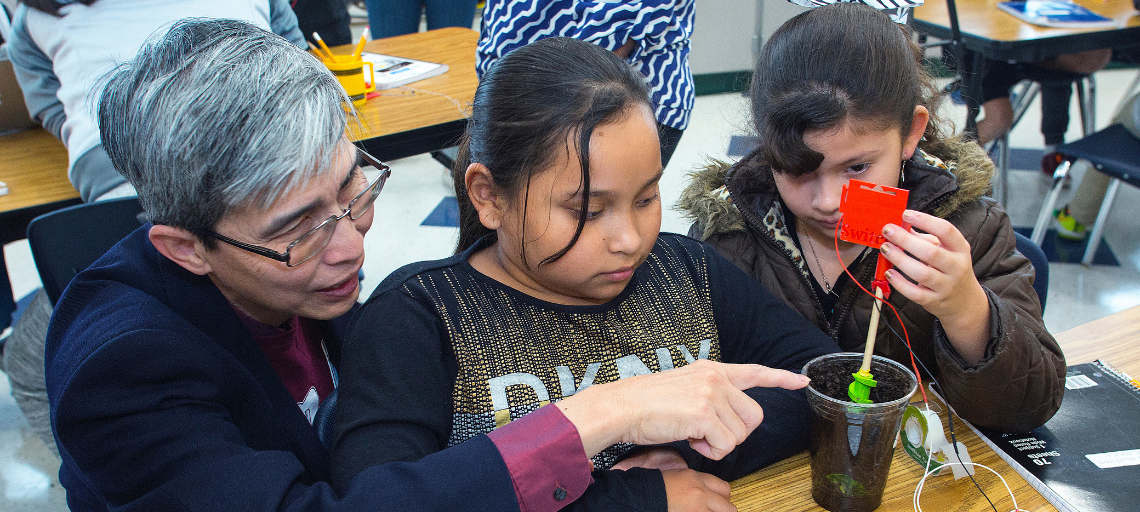Discovering the Best Tech-Infused Teaching Practices
K-12 educators have traditionally taught a curriculum of knowledge and basic skills such as reading, writing and arithmetic, to equip their students for their future livelihood.
But times have changed.
“Educators in 2020 also need to prepare students to work in an age where technical innovation will likely bring several waves of dramatic changes within the lifetime of an elementary school student,” said Francis Quek, founding director of the Institute for Technology-Infused Learning, an interdisciplinary College of Architecture research unit whose faculty and student scholars are learning the best approaches to teach K-12 students in a tech-centered world.
“Reading, writing, and arithmetic education have to be paired with computer technology and science and perhaps most importantly, creativity, because our species is dependent on creativity to survive,” said Quek, professor of visualization. “We are the only species that, when faced with something like the coronavirus, strives to create something like a vaccine. We are the creative species.”
These new teaching challenges raise a number of questions for educators: chief among them is, “what educational approaches work best?”

To address this question, Quek and a cadre of TITIL researchers are engaged in five projects with $2.3 million in funding, most of it from the National Science Foundation. In these projects, which are taking place in Bryan ISD and several rural Texas schools, they’re introducing science, technology, engineering and mathematics (STEM) concepts to minority and/or rural students who are traditionally underrepresented in these fields. At the same time, TITIL researchers are discovering how educators can best teach these concepts.
“Going forward, everyone in the workplace is going to need at least a basic level of technical competence,” said Quek. “No matter one’s role in the workplace, from entry level employees to heads of multinational corporations, everyone will need to understand how to engage with technology.”
In one TITIL project, Quek has teamed with Aggie faculty and students in the departments of psychology and teaching, learning and culture, and teachers at Bryan’s Neal Elementary School to introduce third-, fourth- and fifth-graders to STEM concepts and activities.
“We’re evaluating various approaches through which young students may think of themselves as being interested in and capable of doing science,” he said.
“Such identity development may have a greater impact over time than learning any one piece of science in elementary school. If the children think of themselves as capable of and interested in science and technology, they may persist in learning STEM subjects as they continue in school,” said Quek.
Engaging in imaginative, technology-related activities may also connect participating students to the larger STEM community, “creating a sense of belonging in that community, and helping prepare them to more easily assimilate in a rapidly changing technological world,” he said.
In one of several public demonstrations of their work, Neal students created plastic cup robots that walk on Popsicle sticks, earthquake simulations and other projects including light projectors, chemical mixers, small heaters and more — all created with basic arts-and-crafts and electronics material and powered by simple household batteries.
They presented their projects to audiences at their school, at Texas A&M — and on a big stage half a continent away in New York City.

In March 2019, Neal fourth graders made their science fair-like presentations at Fablearn, a convention at Columbia University of STEM educators, researchers and policymakers from throughout the world who believe that children learn most effectively when they build tech-infused projects and share their experiences with their peers.
Convention goers got an up close look at the results of TITIL’s engagement and what its researchers are learning about the effectiveness of various STEM teaching approaches.
It was a memorable trip for the students at Neal, a school in a mostly minority, low-income area of Bryan. It was the first time most of them had been in an airplane. During the trip, students also saw the sights: the Empire State Building, the Statue of Liberty, “The Lion King” on Broadway, and more.
TITIL also trains Texas A&M STEM students to work alongside Bryan ISD elementary school teachers in the classroom.
During a long semester, Aggie STEM students earn $1500 to serve as Bryan ISD aids, providing technical science knowledge — computer programming, electronics, 3D design — that teachers may not have.
They represent majors from across campus, such as engineering, biochemistry, computer science, psychology, visualization, and forestry, among others, said Quek. “I believe it is very similar to the Peace Corps, so I call it Mentor Corps.”
“It’s a classic ‘win-win’ situation,” said Quek. “Bryan ISD students get enhanced STEM education, and Aggie students get what amounts to a scholarship every year.”
The Aggie/Bryan ISD STEM collaboration could continue even after program funding runs out, said Quek.
“Bryan ISD administrators wanted to continue the program after the funding ended,” said Quek. “They came up with new funding to continue it because of the benefits it brought to their students. This is a very significant step toward sustainability, of research beyond the grant funding.”
The successful partnership is also a model for what could be a widespread collaboration between school districts and universities.
“I believe this has the potential to be explosive,” said Quek. “The median distance of anyone in America to a two-year college is eight miles. The median distance to a four-year college is 18 miles. Partnerships like these could impact more than half of America’s K-12 students.”

What about K-12 Students Who Live in Remote Areas?
TITIL-affiliated students are helping with children in STEM classes in three small South Texas towns, but they’ve found limits to what they’re able to teach online from College Station.
“To address this, we are building robots that will be operated remotely,” he said. “That project is just now starting and we are building technology for it. It’ll be a hybrid of remote learning and hands-on teaching. With this idea of instructors remotely operating robots, we could possibly impact rural schools everywhere.”
As TITIL scholars perform project after project, they are learning which educational approaches are the most successful.
“We are alongside teachers and students in the classroom. We are getting authentic educational experiences,” said Quek. “We are learning firsthand what works, and what does not work.”
For more information, contact rnira@arch.tamu.edu or doswald@tamu.edu.


